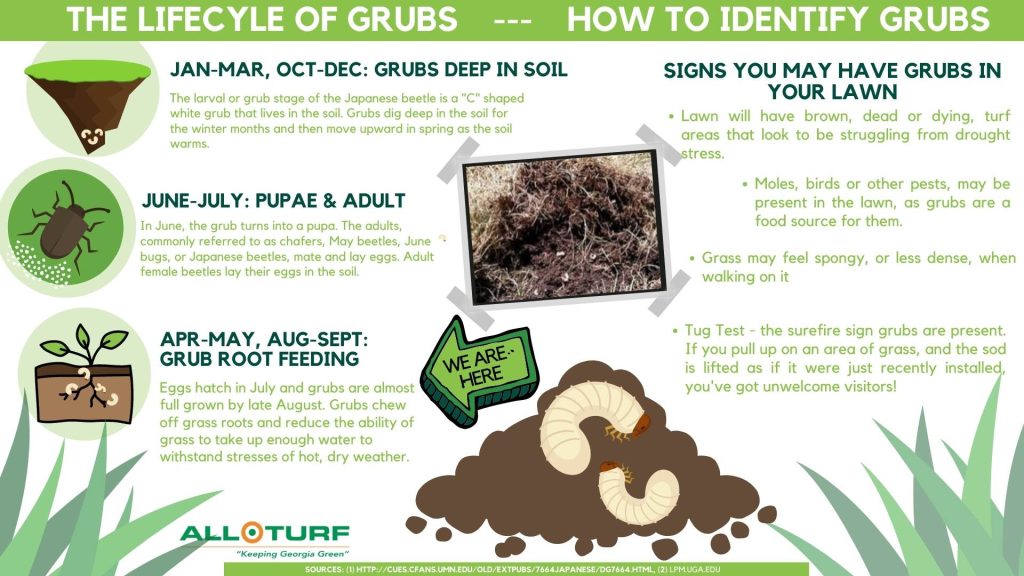Throughout the year, as the seasons change, your lawn is susceptible to different threats. Whether it be a common summer lawn fungus or damaging insects, it’s important to know what to look out for. Every year during spring and fall, damaging insects in your lawn known as white grubs might make themselves at home in your soil. While these insects are small, they can definitely do some damage on your lawn so keep an eye out for these signs, as you may have unwelcomed visitors in your lawn.
What are Grubs?
Lawn grubs are the larval stage of the more commonly known summer insects, the Japanese Beetle, or “June Bug.” The adult beetles emerge from the soil during summer to feed on plants. During summer, the females mate and lay eggs back in the soil, which later hatches white grubs. Grubs have a lifespan of about 1-year and spend most of the time deep in the soil. But during Spring and Fall, they are right beneath the surface, feasting on the root systems of your lawn. Grubs are white, c-shaped pests and although small, their damage can happen quickly.
Signs You May Have Grubs in Your Lawn
As these munching insects feed on roots, areas or patches of the lawn will appear discolored or dead. If you’re keeping up with recommended watering and mowing for your lawn, you can rule out drought stress, mower damage, etc. If you notice strange patterns of brown patches in your lawn, grubs may be to blame. Not only do these insects cause damage to your lawn, but they bring other visitors with them. Grubs are a food source for moles, birds, and other animals so they may appear in the lawn more frequently if you have grubs. Animals in the lawn are not a surefire sign of grubs, however, as they can feed on many different things. For the clearest answer of a grub infestation, test your roots. Try the “tug test” by pulling up on the area of grass. If it lifts, as if the sod were just laid, grubs are present. Another possible sign of grubs is sponginess on the lawn. If you have an extra “spring in your step,” the pests could be at work.

How to Treat for Damaging Lawn Insects
A few grubs might not be too much to worry about. However, if you’re seeing more than 10 in one spot, you’re going to need insecticide. Curative insecticide treatments can help get rid of grubs that are present during spring and early fall. Younger grubs are more susceptible to the application, so catching on quick is key. If you have a current lawn care provider, check with them if they offer lawn insecticide. You can also check at your local home improvement store.
For customers at All Turf Lawn Care, curative insecticide treatments are included in our monthly lawn care program for no additional cost! Insecticides can get expensive, especially when multiple applications are needed. Serving the Metro Atlanta area since 2005, we offer an all-inclusive lawn care service with weed control, fertilization, fungicide, insecticide, and more. Contact us today for a free quote for your Atlanta lawn or visit our blog for the latest lawn care tips.

